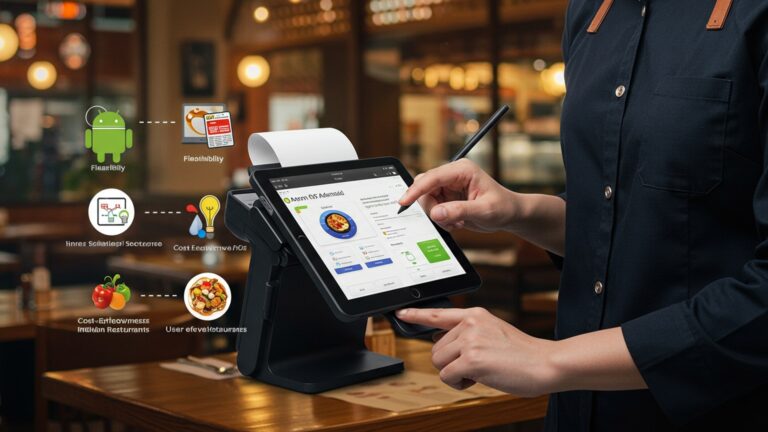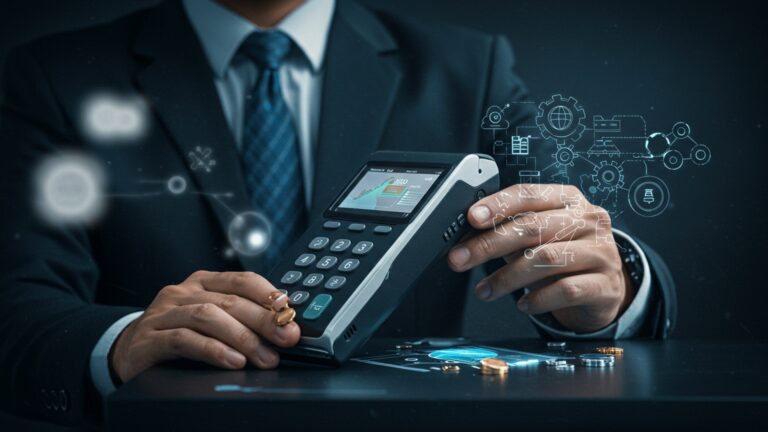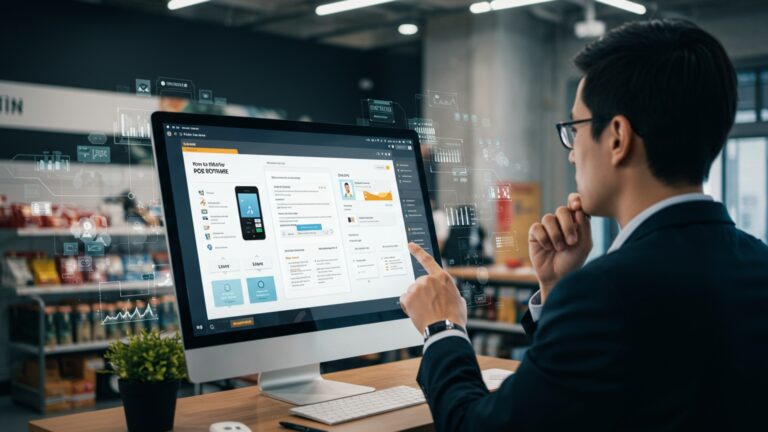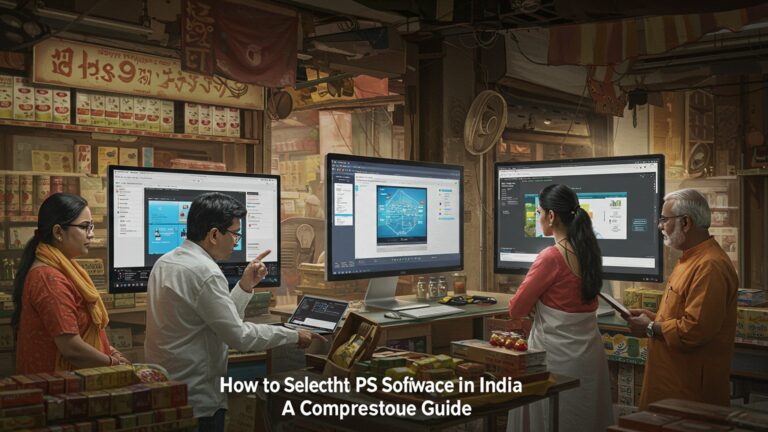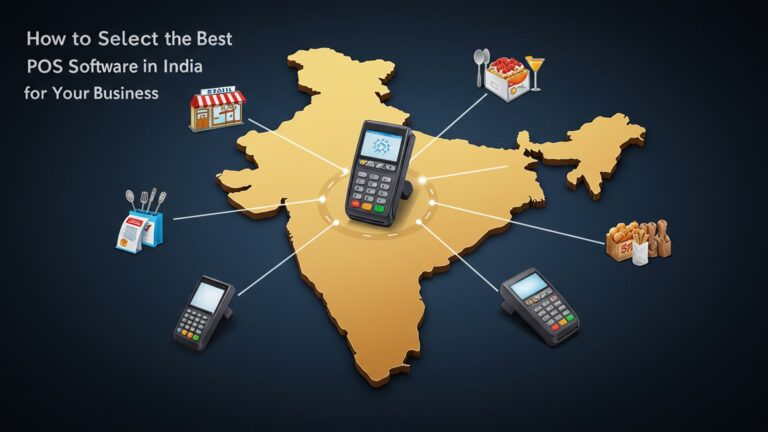Master Mobile POS Software Essential Guide for On-the-Go Business Operations
The dynamic pulse of modern commerce dictates that businesses operate with unparalleled agility, transcending the confines of traditional brick-and-mortar setups. Mastering mobile POS software stands as a critical differentiator, enabling entrepreneurs to conduct seamless transactions, manage inventory. capture vital customer data from virtually any location. From bustling farmers’ markets processing tap-to-pay orders on a tablet to field technicians invoicing on-site, this technology empowers real-time operational fluidity. Recent advancements in cloud integration, robust security protocols for EMV and NFC payments. AI-driven analytics transform a simple sale into a rich data point, fostering an omnichannel experience that keeps pace with customer expectations and ensures competitive advantage in today’s on-the-go economy.
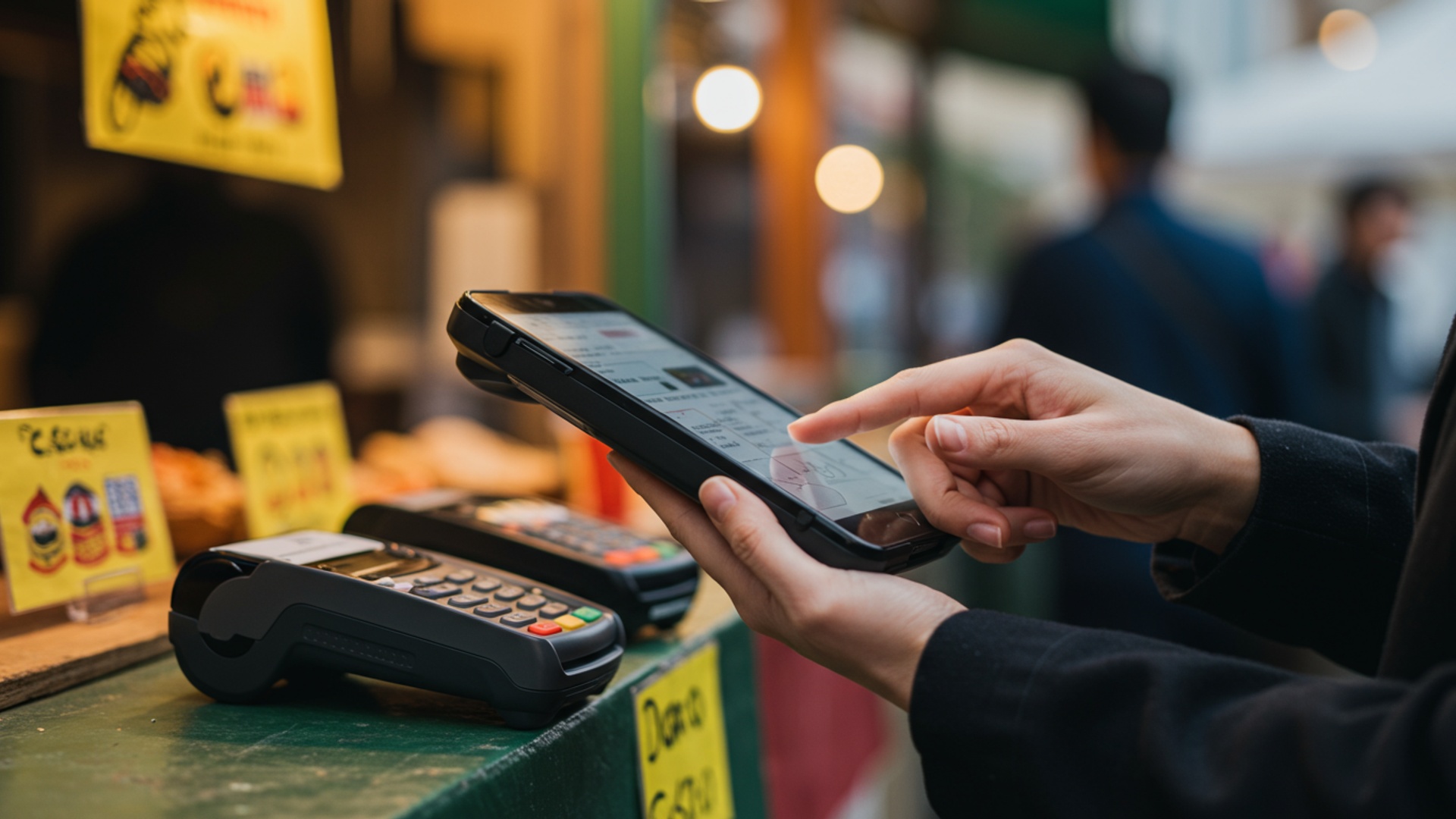
Understanding Mobile POS Software: The Backbone of Modern Commerce
In today’s fast-paced business landscape, the traditional static cash register is increasingly being replaced by dynamic, flexible solutions. At the forefront of this evolution is mobile POS software, a critical tool that empowers businesses to conduct transactions anywhere, anytime. POS, which stands for Point of Sale, traditionally referred to the physical location where a transaction took place. With the advent of mobile technology, this concept has been revolutionized. Mobile POS software transforms a smartphone or tablet into a fully functional sales terminal, enabling businesses to accept payments, manage inventory. track sales data without being tethered to a counter.
Essentially, a mobile POS system comprises three core components:
- A mobile device: Typically a smartphone or tablet running iOS or Android.
- A card reader: A small device that attaches to or wirelessly connects with the mobile device to accept credit/debit card payments (e. g. , chip, swipe, or contactless).
- The mobile POS software application: The heart of the system, installed on the mobile device, which processes transactions, manages products. handles reporting.
This powerful combination liberates businesses from the confines of a fixed location, opening up new avenues for growth and customer engagement.
The Transformative Power of Mobile POS for Modern Businesses
The shift towards mobile operations isn’t just a trend; it’s a strategic necessity for businesses aiming for agility and efficiency. Implementing robust mobile POS software delivers a multitude of benefits:
- Unprecedented Mobility and Flexibility: Businesses are no longer restricted to selling from a physical storefront. Pop-up shops, food trucks, market stalls. even field service technicians can process sales on-site, expanding their reach and revenue opportunities.
- Enhanced Customer Experience: Imagine a retail associate helping a customer on the shop floor, processing their payment instantly without needing to queue at a checkout. Or a restaurant server taking orders and payments tableside. This “line busting” capability significantly reduces wait times and provides a more personalized, seamless shopping or dining experience.
- Streamlined Operations: Beyond just payments, comprehensive mobile POS software often includes integrated inventory management, allowing businesses to track stock levels in real-time. This reduces errors, prevents stockouts. optimizes ordering processes. Sales data is automatically recorded, providing immediate insights into performance.
- Cost-Effectiveness: Compared to traditional, bulky POS systems that often require significant upfront investment in hardware and installation, mobile POS solutions are typically more affordable. They leverage existing mobile devices and often operate on subscription-based software models, making them accessible even for small businesses and startups.
- Data-Driven Insights: Every transaction processed through mobile POS software contributes to a rich dataset. Businesses can assess sales trends, peak hours, popular products. customer purchasing habits, enabling more informed decision-making for marketing, inventory. staffing.
- Improved Employee Efficiency: With intuitive interfaces, employees can quickly learn to use the system, reducing training time and increasing productivity. The ability to manage multiple tasks from a single device simplifies workflows.
A personal anecdote perfectly illustrates this: A local artisan running a booth at various craft fairs struggled with cash-only transactions and manual inventory tracking. After adopting a simple mobile POS software system with a card reader, their sales increased by 30% almost immediately, simply because they could accept card payments. They also found it easier to track which items sold best at which events, allowing them to optimize their product offerings.
Essential Features to Look for in Mobile POS Software
Not all mobile POS solutions are created equal. The right choice depends on your specific business needs. a robust system should offer a core set of features:
- Payment Processing Capabilities: This is fundamental. Ensure the software supports various payment methods, including EMV chip cards, NFC (contactless payments like Apple Pay/Google Pay), magnetic stripe cards. ideally, manual entry. Look for secure, PCI-compliant processing.
- Inventory Management: Real-time tracking of products, stock levels, variations (size, color). even multi-location inventory. This prevents overselling and helps with reordering.
- Sales Tracking and Reporting: Detailed sales reports by product, category, employee. time period. Customizable dashboards provide quick insights into key metrics.
- Customer Relationship Management (CRM): The ability to capture customer data (name, email), track purchase history, manage loyalty programs. offer personalized promotions.
- Employee Management: Assigning roles and permissions, tracking employee sales performance. managing clock-in/clock-out functionality.
- Offline Mode: Crucial for businesses operating in areas with unreliable internet connectivity. The system should be able to process transactions offline and sync data once connectivity is restored.
- Integrations: Compatibility with other essential business tools like accounting software (e. g. , QuickBooks, Xero), e-commerce platforms (e. g. , Shopify). marketing tools.
- Security Features: End-to-end encryption for transactions, fraud detection. compliance with industry standards like PCI DSS.
- Receipt Options: Ability to print, email, or text digital receipts to customers.
How Mobile POS Software Works: A Glimpse Under the Hood
While the user interface of mobile POS software is designed for simplicity, a complex interplay of hardware and software components works seamlessly behind the scenes to process transactions securely and efficiently. Here’s a simplified breakdown:
- Transaction Initiation: An employee uses the mobile POS app on a tablet or smartphone to select items for purchase.
- Payment Input: The customer presents their payment method.
- For card payments, the card is swiped, inserted (chip), or tapped (NFC) on the connected card reader.
- For cash payments, the amount is entered manually into the software.
- Data Encryption & Transmission: If it’s a card payment, the card reader encrypts the sensitive payment data (e. g. , card number, expiration date) immediately at the point of interaction (often called “point-to-point encryption” or P2PE). This encrypted data is then sent from the card reader to the mobile POS software on the device.
- Authorization Request: The mobile POS software, acting as an intermediary, securely transmits the encrypted transaction data to a payment gateway. The payment gateway then forwards this request to the acquiring bank (the merchant’s bank), which in turn sends it to the card network (e. g. , Visa, Mastercard) and finally to the issuing bank (the customer’s bank).
- Authorization Response: The issuing bank verifies funds and card validity and sends an approval or denial back through the card network, acquiring bank, payment gateway. finally to the mobile POS software. This entire process typically takes mere seconds.
- Transaction Completion: Upon approval, the mobile POS software records the transaction, updates inventory. generates a receipt (digital or printed). If the system operates in an offline mode, transactions are stored locally and uploaded to the cloud once an internet connection is re-established.
- Data Synchronization: For cloud-based mobile POS software, all transaction data, inventory updates. customer details are automatically synchronized with a central cloud server. This ensures that all devices connected to the system have access to the most up-to-date insights.
An example of data flow during a transaction might look something like this:
Customer Card -> Card Reader (Encryption) -> Mobile POS App -> Payment Gateway (Tokenization) -> Acquiring Bank -> Card Network -> Issuing Bank -> [Authorization Response] -> Back to Mobile POS App
Maintaining PCI DSS (Payment Card Industry Data Security Standard) compliance is paramount for any mobile POS software provider to ensure the highest level of security for cardholder data.
Real-World Applications: Who Benefits Most from Mobile POS Software?
The versatility of mobile POS software makes it an invaluable asset across a wide spectrum of industries. Its ability to facilitate transactions and manage operations on the go addresses critical needs for many business models:
- Food Trucks and Pop-Up Restaurants: These businesses epitomize mobility. A mobile POS allows them to accept all forms of payment, manage orders. track inventory efficiently, no matter where they park.
- Retail Boutiques and Market Stalls: Small retail shops can empower sales associates to assist customers and complete purchases anywhere in the store, reducing queues. Vendors at farmers’ markets or craft fairs can significantly boost sales by accepting credit cards.
- Field Service Businesses: Plumbers, electricians, HVAC technicians. landscapers can process payments and issue invoices on-site immediately after completing a job, improving cash flow and customer satisfaction.
- Event Vendors: Concerts, sports events. festivals often feature numerous vendors. Mobile POS systems allow for rapid transaction processing in high-volume, temporary settings.
- Salons and Spas: Staff can check out clients and rebook appointments from anywhere in the salon, offering a more personalized and efficient service.
- Non-Profits and Fundraisers: Organizations collecting donations at events can use mobile POS to accept card contributions, making it easier for supporters to give.
- Mobile Sales Teams: Sales representatives conducting business presentations or sales calls off-site can finalize deals and process payments on the spot.
Consider “Coffee on Wheels,” a small mobile coffee cart that operates at various corporate parks and local events. Before adopting a dedicated mobile POS software, they relied heavily on cash or cumbersome invoice systems. Implementing a compact mobile POS system allowed them to accept card payments quickly, track daily sales by location. even manage their limited stock of pastries and coffee beans. This move not only increased their average transaction value but also provided invaluable data for optimizing their route and product offerings, transforming a hobby into a thriving small business.
Mobile POS vs. Traditional POS: A Comparative Overview
While both mobile POS and traditional POS systems serve the core function of processing sales, they cater to different operational needs and offer distinct advantages. Understanding these differences is key to selecting the right solution for your business.
| Feature/Aspect | Mobile POS Software | Traditional POS System |
|---|---|---|
| Mobility | High; operates on smartphones/tablets, allowing transactions anywhere with internet (or offline mode). | Low; fixed hardware (register, monitor, printer) requires a dedicated counter space. |
| Cost | Generally lower upfront cost; leverages existing mobile devices, subscription-based software. | Higher upfront cost for dedicated hardware, software licenses. installation. |
| Hardware | Minimal: Smartphone/tablet, compact card reader, optional portable printer. | Extensive: Dedicated monitor, cash drawer, receipt printer, barcode scanner, payment terminal. |
| Features | Strong focus on sales processing, inventory, basic CRM. reporting. Often cloud-based. | Comprehensive, often robust inventory, advanced reporting, employee management, specific industry features (e. g. , restaurant table management). |
| Setup & Installation | Quick and easy; download app, connect card reader, configure settings. | More complex; requires professional installation, networking. extensive configuration. |
| Scalability | Highly scalable; easily add more devices/users as business grows, often pay-per-user. | Can be scalable but often requires purchasing additional hardware units and licenses. |
| Target Business | Pop-ups, food trucks, small retail, field services, mobile businesses, line busting. | Established retail stores, full-service restaurants, large hospitality venues. |
| Connectivity | Relies on cellular data or Wi-Fi; often includes offline processing. | Typically hardwired Ethernet or strong Wi-Fi; less common for offline capabilities. |
For a business prioritizing flexibility, lower initial investment. on-the-go operations, mobile POS software is often the superior choice. But, for a high-volume brick-and-mortar store requiring extensive hardware peripherals and deeply integrated back-office features, a traditional POS might still be preferred, or a hybrid approach could be adopted.
Choosing the Right Mobile POS Software for Your Business
With numerous options available, selecting the ideal mobile POS software can seem daunting. A structured approach focusing on your specific needs will simplify the decision-making process:
- Assess Your Business Needs:
- Industry: Are you retail, food service, service-based, or events? Each has unique requirements (e. g. , table management for restaurants, variant tracking for retail).
- Size and Growth Potential: How many employees will use it? What’s your anticipated transaction volume? Choose a solution that can grow with you.
- Current Systems: Do you need to integrate with existing accounting, e-commerce, or CRM software?
- Prioritize Essential Features: Based on your needs assessment, create a list of “must-have” features (e. g. , inventory management, specific payment types) and “nice-to-have” features. Don’t pay for features you’ll never use.
- Consider Your Budget: Mobile POS solutions typically involve monthly subscription fees and transaction processing rates. Factor in the cost of any necessary hardware (card readers, tablets if you don’t already own them). Compare transparent pricing models.
- Ease of Use: The software should be intuitive for you and your staff. A steep learning curve can lead to inefficiencies and errors. Look for clear interfaces and logical workflows.
- Customer Support: What kind of support is offered (phone, email, chat, 24/7)? Reliable and responsive customer support is crucial, especially during peak business hours.
- Security and Compliance: Ensure the provider adheres to PCI DSS standards and offers robust security features like end-to-end encryption. Data breaches can be devastating.
- Offline Capabilities: If your business operates in areas with spotty internet, an offline mode is non-negotiable to prevent lost sales.
- Trial Periods and Demos: Most reputable providers offer free trials or demos. Take advantage of these to test the software with your actual business operations before committing.
For instance, a small artisan jewelry maker selling at craft fairs might prioritize an affordable system with excellent inventory tracking and simple payment processing. In contrast, a mobile coffee truck might need robust order management, quick transaction speed. offline capabilities. By meticulously evaluating these factors, businesses can confidently select a mobile POS software solution that truly empowers their on-the-go operations.
Actionable Steps for Implementing Mobile POS Software
Once you’ve chosen the right mobile POS software, a smooth implementation process is key to maximizing its benefits. Follow these actionable steps to get your system up and running effectively:
- Vendor Onboarding and Account Setup:
- Complete the registration process with your chosen mobile POS provider.
- Set up your merchant account for payment processing – this usually involves providing business details, bank insights. tax IDs.
- Gather and Configure Hardware:
- Acquire the necessary hardware: tablets/smartphones, card readers. any optional peripherals like portable receipt printers or barcode scanners.
- Follow the manufacturer’s instructions to pair and configure these devices with your mobile POS software application.
- Product and Inventory Data Entry:
- Input all your products or services into the software, including names, prices, descriptions, SKUs. categories.
- If applicable, enter your current inventory levels. Many systems allow for bulk imports via CSV files, which can save significant time.
- Configure any product variations (sizes, colors) and modifiers (e. g. , extra shot of espresso).
- Employee Setup and Training:
- Create profiles for each employee who will use the system, assigning appropriate roles and permissions.
- Conduct thorough training sessions. Focus on practical scenarios: processing sales, issuing refunds, managing returns, applying discounts. closing out shifts. Hands-on practice is crucial.
- Integrate with Existing Systems (If Applicable):
- If your mobile POS software offers integrations with accounting software (e. g. , QuickBooks, Xero) or e-commerce platforms (e. g. , Shopify), set these up. This ensures seamless data flow and reduces manual data entry.
- Perform Test Transactions:
- Before going live, run several test transactions using various payment methods. This helps confirm that everything is working correctly and familiarizes your team with the process without impacting real sales data.
- Test refunds and exchanges as well.
- Go Live and Monitor Performance:
- Launch your new mobile POS system.
- Closely monitor its performance during the initial days and weeks. Pay attention to transaction speed, accuracy. any employee or customer feedback.
- Be prepared to troubleshoot minor issues and make adjustments as needed.
- Regular Updates and Review:
- Keep your mobile POS software and operating system on your devices updated to ensure you have the latest features, security patches. bug fixes.
- Regularly review your sales reports and inventory data to optimize your business operations.
By systematically following these steps, businesses can ensure a smooth transition to their new mobile POS software, unlocking its full potential to enhance efficiency, customer satisfaction. profitability.
Conclusion
Mastering mobile POS software isn’t merely about adopting a new tool; it’s about fundamentally reshaping your on-the-go business for unparalleled agility and customer satisfaction. The true power lies in leveraging its capabilities beyond basic transactions, transforming every pop-up shop, food truck, or mobile service into a fully integrated operation. My personal tip: routinely test your mobile setup in various network conditions, especially before a major event, to ensure seamless operations and avoid last-minute glitches. Embrace the latest developments, such as enhanced contactless payment options and real-time inventory synchronization, which are crucial for maintaining efficiency even when you’re miles from your primary base. Imagine a mobile beauty stylist instantly updating client preferences and product stock from a client’s home, ensuring they never miss a sale or forget a detail. This level of immediate, data-driven insight empowers you to make smarter decisions, enhance customer loyalty. scale your business with confidence. The journey to mobile POS mastery is an ongoing one. with each step, you unlock new potentials for growth and operational excellence, truly unshackling your business from the traditional counter.
More Articles
A Practical Guide How Mobile POS Software Enhances Customer Service
Learn How Android POS Software Can Revolutionize Your Sales
Learn How Cloud Based POS Software Boosts Business Efficiency
How to Integrate Billing and POS Software for Maximum Profit
A Comprehensive Guide to Mastering Essential POS Software Features
FAQs
What exactly is this ‘Master Mobile POS Software Essential Guide’ all about?
This guide is your comprehensive resource for understanding, choosing. effectively using mobile Point-of-Sale (POS) software. It’s specifically tailored for businesses that operate outside a traditional storefront, showing you how to manage sales, inventory. customer interactions directly from your smartphone or tablet, wherever you are.
Who should really dive into this guide?
If your business isn’t tied to a single location, this guide is definitely for you! It’s perfect for food truck operators, pop-up shop owners, craft fair vendors, field service technicians, home-based businesses attending markets, or anyone who needs to process transactions and manage operations on the move.
How does mobile POS software specifically benefit an on-the-go business?
Mobile POS transforms your device into a full-fledged sales tool. It allows you to accept payments, track inventory in real-time, manage customer data. generate sales reports instantly, all from any location. This flexibility means you can seize sales opportunities anywhere, without heavy equipment or a fixed setup.
What are the most vital features to look for in a mobile POS system?
You’ll want to prioritize secure payment processing (including credit cards and contactless options), real-time inventory management, robust sales reporting, customer relationship management (CRM) capabilities. an intuitive, easy-to-use interface. Offline mode functionality is also crucial for uninterrupted service.
Is it complicated to set up and start using mobile POS software?
Not at all! Most modern mobile POS solutions are designed for simplicity and quick setup. This guide walks you through the entire process, from selecting the right software and hardware to configuring your settings, making it straightforward even if you’re not a tech expert.
Can I trust mobile POS with secure payments and customer data?
Absolutely. Reputable mobile POS systems prioritize security with features like end-to-end encryption for transactions, compliance with industry standards (like PCI DSS). secure data storage. The guide also covers best practices to ensure your business and customer data stays protected.
What happens if I lose internet connection during a sale?
Good mobile POS software comes equipped with an offline mode. This means you can continue to process sales even without an internet connection. Once you’re back online, all the stored transaction data automatically syncs with your system, so you never miss a beat or lose any valuable sales details.

